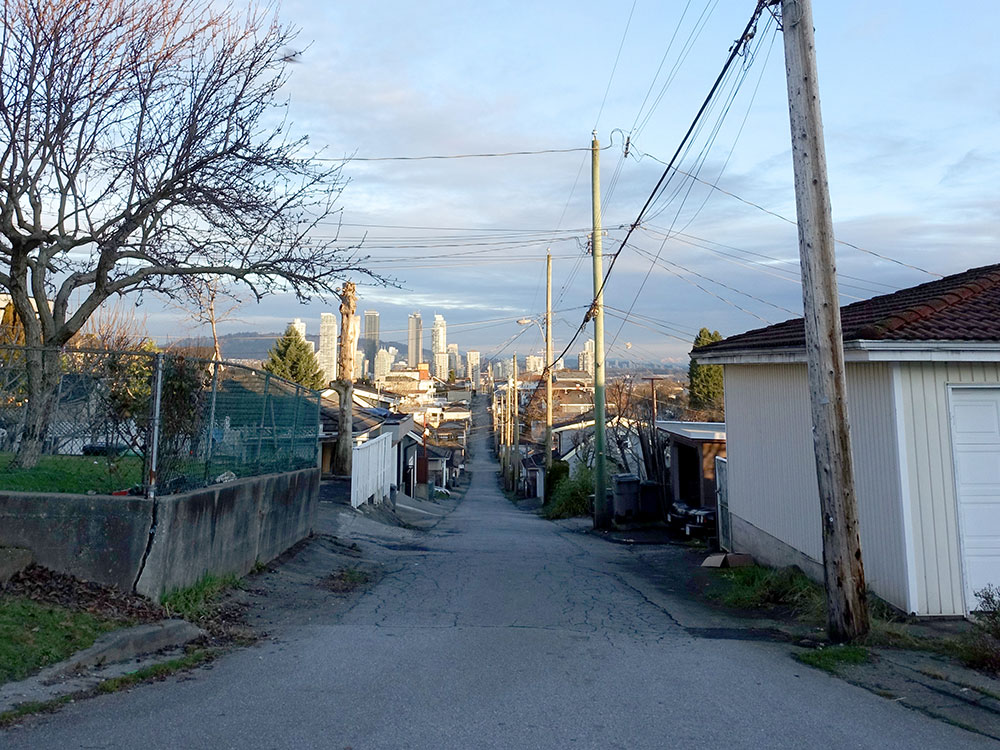The great neoliberal experiment of privatizing housing solutions, which began in the 1990s, has largely been a failure.
Vancouver, where I live, feels like ground zero for the housing crisis. Single-detached houses make up 27.7 per cent of the total number of occupied dwellings, while taking up approximately 80 per cent of the land zoned for residential use. Is the B.C. government making changes that will help?
There are some signs of hope.
In November, the province announced new housing legislation affecting all municipalities. New regulations, set to be incorporated into local bylaws this summer, allow small-scale, multi-unit housing with a minimum of one secondary suite or one laneway house in all single-detached or duplex residential zones. Within municipalities of more than 5,000 people, zoning will allow for three to four units in select areas on single-detached or duplex lots, depending on lot size.
On land close to transit hubs, even more density is permitted — up to six units — with up to 20 storeys automatically allowed at sites adjacent to transit-oriented areas.
The province’s aim is to increase the supply of housing throughout British Columbia and address the housing crisis facing almost every community.
Comparable approaches have been implemented in California, Washington state and Oregon. B.C.’s approach echoes these other regulatory models, where local governments can no longer exclusively zone neighbourhoods for single-detached lots. The provincial government predicts this change in housing regulation could enable the development of up to 293,000 new units by 2034.
The legislation also streamlines the permitting process by removing rezoning requirements and comes in tandem with other legislation, including short-term rental regulations. This coming policy will limit rentals like those offered by Airbnb to within a host’s principal residence or property, with the aim of returning housing to the long-term market and alleviating some of the pressures on housing demand.
If nothing else, the legislation provides a much-needed reprieve from the NIMBYism that has slowed small-scale development and been a thorn to municipal decision-making. It takes the responsibility for land-use changes out of the hands of local governments and puts it into the offices of provincial MLAs.
For those in local government, this seems like an effective way to redirect potential backlash away from city hall and into the provincial legislature. But the question remains whether this is enough to address the housing crisis facing British Columbia. Giving the plan a 10-year time frame to deliver results, people are hedging their bets.
The B.C. legislation echoes policy that was implemented by major cities in New Zealand in 2021. The precedent-setting 2016 experiment in Auckland offered the first metrics of success. According to a report, housing prices in the major city have risen by only 15 per cent since 2016 compared with 65 per cent countrywide. The upzoning reforms have kept housing inflation in Auckland, once the most unaffordable city in New Zealand, to well below the national average.
In B.C., it seems the new zoning legislation will need strong uptake to make a dent in the housing crisis. According to a Canada Mortgage and Housing Corp. report released in September, if B.C. continues building homes at the current pace, by 2030 the province will still be short 610,000 housing units needed to reach the level of housing affordability experienced in 2012.
In recent years, the creation of new housing has been inadequate in British Columbia when compared with population growth. Fifty years ago, housing completions and population growth countrywide were more or less on par. In British Columbia, population growth in 2022 was 3.5 times greater than housing completions — approximately 150,000 new people with just 42,000 new homes. While housing supply is being addressed provincially through this new legislation, the larger policy changes affecting housing across B.C. and Canada in the past half century flesh out the picture of how we got here.
One of the most marked changes is the lack of federal involvement in social housing, peaking at approximately 20,000 to 30,000 units per year in the 1970s and ending in 1993 as an austerity measure to address a growing national debt under Jean Chrétien’s Liberal government.
Another key change has been the lack of tax incentives for developers to create rental housing, which were also axed in the 1990s. Federal economic policy moved from holding together housing in Canada to handing over responsibility to the private sector through development incentives, but without a focus on housing affordability for everyone.
There seems to be another measure that needs to be addressed, something I’m not sure we can achieve — the ideological shift from housing as an investment to housing as a basic human right. The Homelessness Services Association of BC identified a 32 per cent increase in homelessness in 2023 compared with the previous count in 2020.
Along a similar vein, of the 660,000 renter households in B.C., more than 105,000, or 16 per cent — about the size of the city of Nanaimo — pay more than 50 per cent of their gross income on rent and utilities, a crisis level that puts people at increased risk of homelessness.
Another almost 150,000 renter households pay more than 30 per cent of their gross income towards rent and utilities, a level Statistics Canada calls unaffordable. In a 2021 provincial report, it was estimated that 15 per cent of the population, or one in six people, faces poverty and housing insecurity.
While the situation may seem dire, I believe the province’s first steps on housing are hopeful. I also believe there are actions taking place at the municipal level that are ground-breaking, such as Burnaby’s new housing authority, focused on affordable housing, and New Westminster’s recent bylaw amendments that give the city authority to build social housing on its own lands despite any NIMBY reactions that may arise.
Yet the province’s approach leaves me with a lot of questions about where and when the necessary housing will be built. Even by the province’s own calculations, the 293,000 units that could be built in 10 years fall well short of the additional units the CMHC estimates are needed to make housing somewhat affordable again. If the legislation is going to have an impact, it will need to be embraced by homeowners who add suites and laneway homes far beyond anyone’s expectations.
ReHousing, a research initiative based in Toronto, provides an excellent online tool kit to help homeowners understand what infill housing could look like on their property — a tool needed for all communities in B.C. For real impact, the process will need to be fully streamlined, the outcomes somewhat predictable and the benefits tangible.
I still stumble when I think about the great property divide in most communities, where single-detached housing takes up most of the residential land and the owners have tended to reject infill. The opportunity to increase housing on this land seems monumental, but I wonder whether incentivizing “gentle density” will be enough. It feels like more drastic measures may be needed.
Perhaps low-density neighbourhoods could be required to add infill, with no new permits issued for single-detached housing. Additional property taxes for low-density properties could also help to incentivize more housing. This additional revenue stream could mean lower taxes for rental properties and could potentially alleviate the high costs of rental housing.
While these measures would no doubt be unpopular with single-detached property owners, I believe they may be necessary to really address the lack of affordable housing. We are, after all, in a crisis. ![]()
Read more: BC Politics, Housing


















Tyee Commenting Guidelines
Comments that violate guidelines risk being deleted, and violations may result in a temporary or permanent user ban. Maintain the spirit of good conversation to stay in the discussion and be patient with moderators. Comments are reviewed regularly but not in real time.
Do:
Do not: